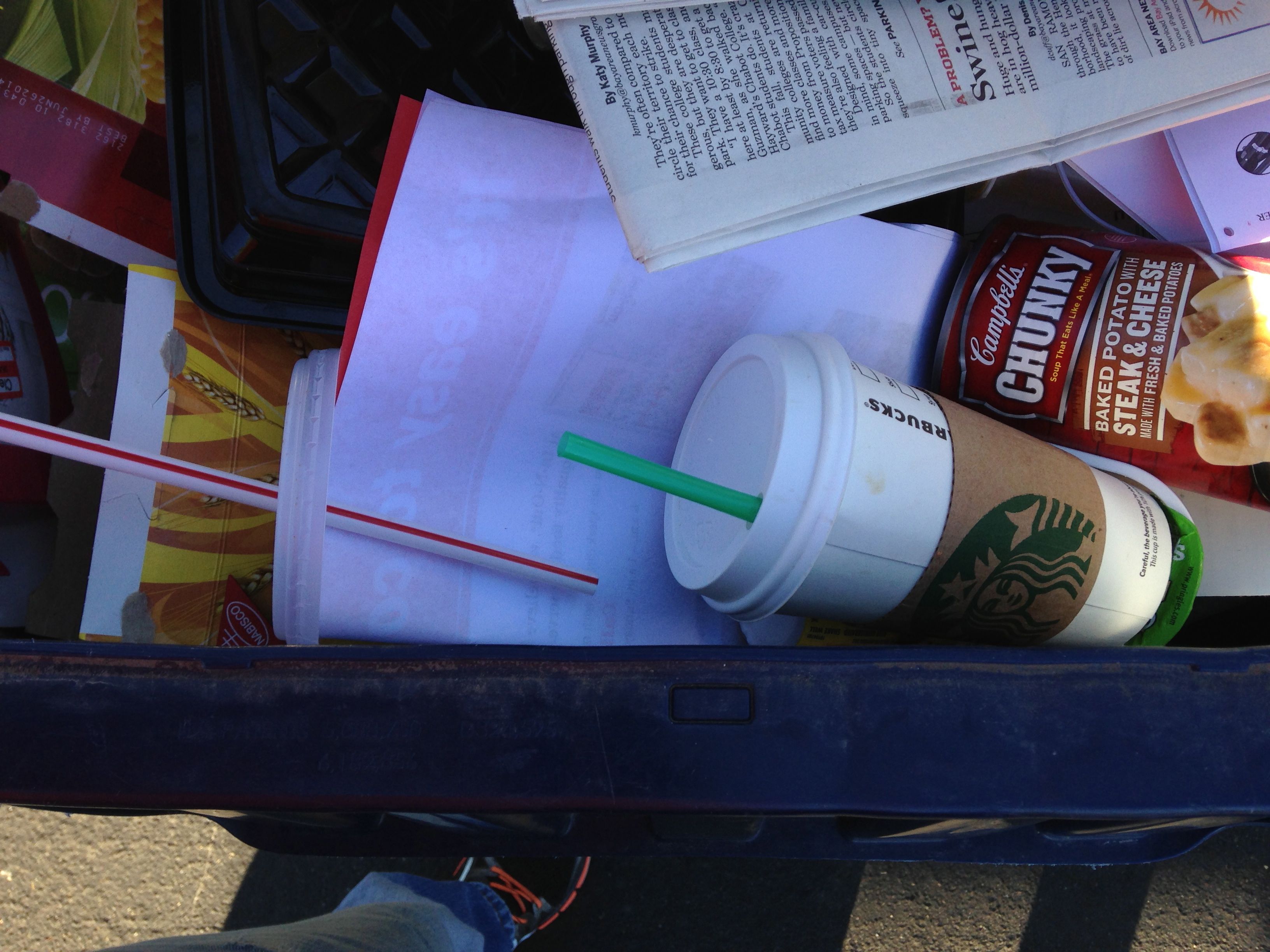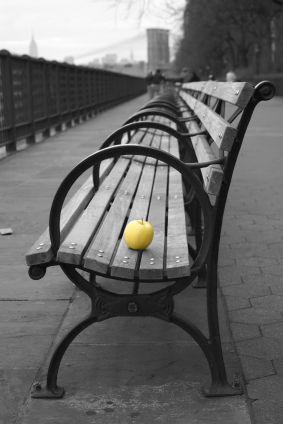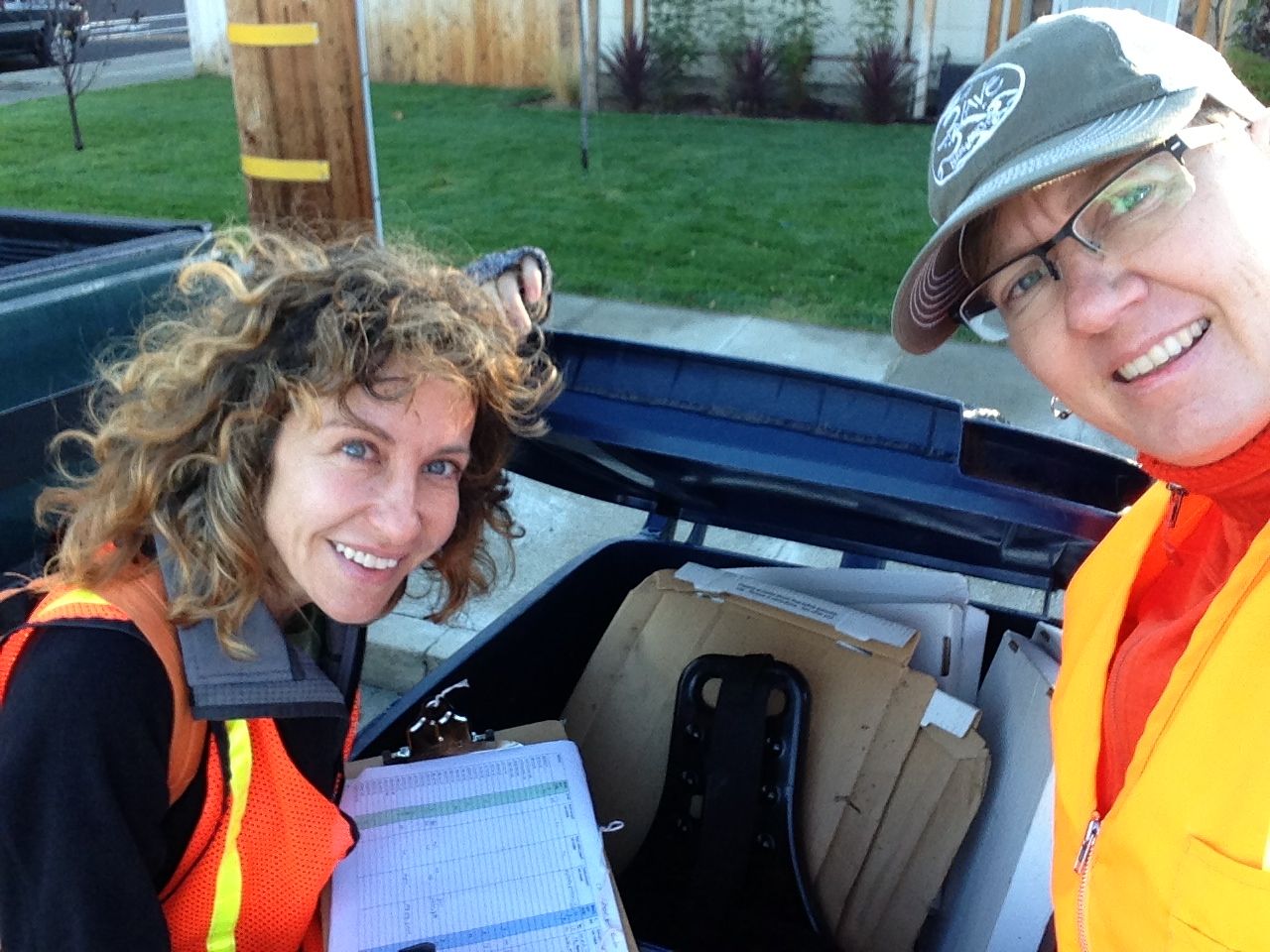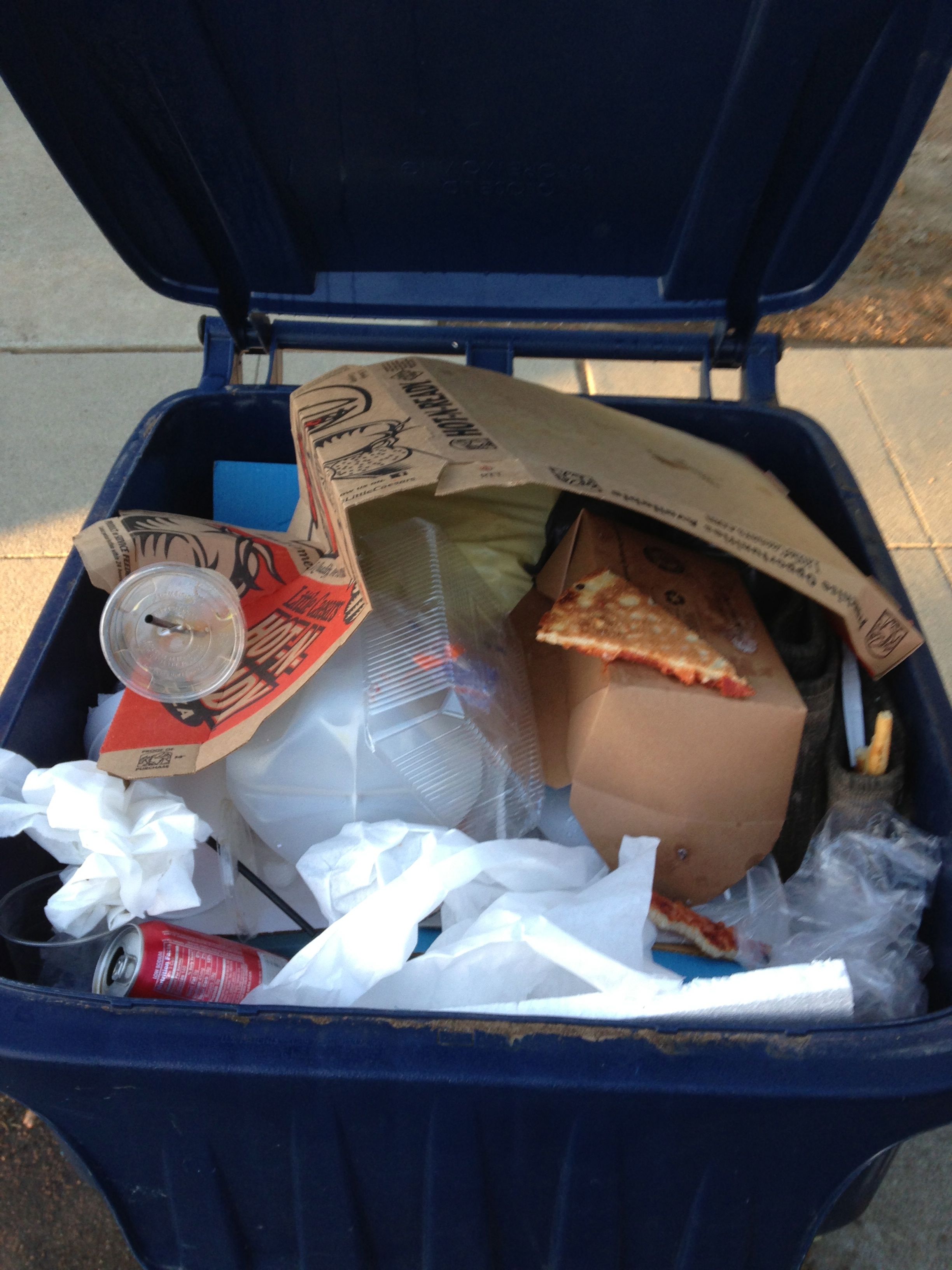[socialpoll id=”2179787″]
Recycling Spot Checks: Flipping Lids in Livermore
During the last week of September, my colleague Stefanie Pruegel (pictured left) and I (pictured right) donned orange safety vests and set out before sunrise to study recycling program participation in various neighborhoods in Livermore, California. Armed with headlamps, clipboards and maps, we walked some 20 miles over five days and flipped about 2,000 recycling and organics cart lids.
This walkabout was part of our observational research to gain insights into residents’ recycling and composting habits, including contamination patterns (i.e., putting things in the wrong carts). The data we gathered will also measure the baseline participation rate. Repeating this measurement after an outreach campaign will allow us to compare the results and determine how successful we were as well as guide the next phase of outreach. This particular kind of measurement can be a messy job, but someone’s gotta do it.
During our lid-flipping adventures, several patterns emerged:
• Livermore loves pizza and is confused about leftovers. In Livermore, the proper process is to chuck pizza boxes and leftovers into the Organics (compost) cart. Pizza boxes are considered food-soiled paper (as are most fast food paper wrappers), and pizza crusts are considered food scraps – all of which goes into Organics. However, we found households were evenly split over whether to put the box in Recycling or Organics.
• Livermore is a thirsty bunch, and cup sorting is a challenge. What is the preferred destination for takeout cups, lids and straws? These items are made of both plastic and paper, and each needs to be handled  differently. This leads to a lot of consumer confusion. We found that no matter if the cups were for cold drinks (plastic) or hot drinks, (paper) the majority ended up in the recycling cart, along with their lids and straws. But, the lids and straws actually go into the garbage, and the paper cups go in the organics. This kind of contamination adds considerable expense for waste haulers and ultimately can drive up trash rates. (Please Note: This is a general observation and not a prediction for Livermore.)
differently. This leads to a lot of consumer confusion. We found that no matter if the cups were for cold drinks (plastic) or hot drinks, (paper) the majority ended up in the recycling cart, along with their lids and straws. But, the lids and straws actually go into the garbage, and the paper cups go in the organics. This kind of contamination adds considerable expense for waste haulers and ultimately can drive up trash rates. (Please Note: This is a general observation and not a prediction for Livermore.)
• Livermore has beautiful yards, and sorting the waste is a conundrum. Throughout the week we “ooh-ed” and “ah-ed” at the beautiful yards and landscaping in the neighborhoods we saw. However, many residents seemed to assume that anything from the yard belongs in the Organics cart. In fact, certain items like pet waste belongs in Garbage, not Organics. Putting whatever blows (or gets pooped) in people’s yards into the Organics cart causes another costly contamination headache.
We saw some clear consistencies in what was going right and wrong in the carts. Next we will tabulate our findings, design an outreach campaign to focus on the most prevalent behaviors that need to change, and afterwards, check those carts again. We look forward to helping the city and the citizens of Livermore “sort out” any issues and move forward with their waste reduction goals.
Recycling the Big Apple (Core): Food Scrap Collection Comes to New York City
The New York City mayor’s office last week announced the rollout of food scrap recycling to City residents after a successful pilot program in Staten Island.  While this newest move toward Zero Waste by a big city is encouraging, we suspect that plenty of Zero Waste Outreach will be needed to make this new behavior palatable to blasé New Yorkers. The Big Apple will come up against many of the barriers to food scrap recycling that we struggle with on the West Coast, including countering perceptions of odor and vermin — aka the “yuck factor” — that make introducing food scrap recycling so challenging.
While this newest move toward Zero Waste by a big city is encouraging, we suspect that plenty of Zero Waste Outreach will be needed to make this new behavior palatable to blasé New Yorkers. The Big Apple will come up against many of the barriers to food scrap recycling that we struggle with on the West Coast, including countering perceptions of odor and vermin — aka the “yuck factor” — that make introducing food scrap recycling so challenging.
While several headlines focus on New York’s new “leadership” with this move, it should be noted that the City’s broad goal is to divert 30% of waste from landfills by 2017 (and 75% by 2030), as compared to San Francisco’s goal of zero waste by 2020 and the State of California’s goal of a 75% diversion rate by 2020, with an ultimate target of zero waste. New York’s current residential recycling rate is a startlingly low 15 percent.
The City conducted a pilot program in Staten Island, and officials were heartened after reaching a 43% participation rate in the targeted area. However, Staten Island is atypical of New York in that it comprises largely single-family homes. We know from our outreach work that multi-family dwellings (MFDs) are one of the most challenging segments when it comes to organics recycling … and there are a lot of apartment buildings in New York. MFDs lag single family dwellings in recycling rates by a huge margin. In Seattle, for example, single family homes achieved a 70.3% recycling rate in 2010, versus 29.6% for MFDs. Barriers to food scrap recycling in multi-unit buildings include space concerns, the perceived inconvenience, high turnover among residents and building managers, and lack of accountability, as the anonymity afforded by a large apartment building can let people assume that no one will know who’s not using the correct bin.
Believe it or not, curbside food scrap composting has been tried previously in New York, with a pilot program in Brooklyn in the early 1990s. But perhaps the effort was ahead of its time. The pilot wasn’t extended due to concerns that diversion would be low, while the expense and environmental impact of adding another truck route to the waste collection system was high.
In the interim, composting has been championed by a local agency, NYC Compost Project, which supports and promotes community-based composting sites throughout the City. The 20 years that have passed since the Brooklyn pilot likely means a better return on investment
We salute New Yorkers for taking steps toward reducing waste; each diverted pail-full will make a difference. If food scrap recycling can make it there, it can make it anywhere!

